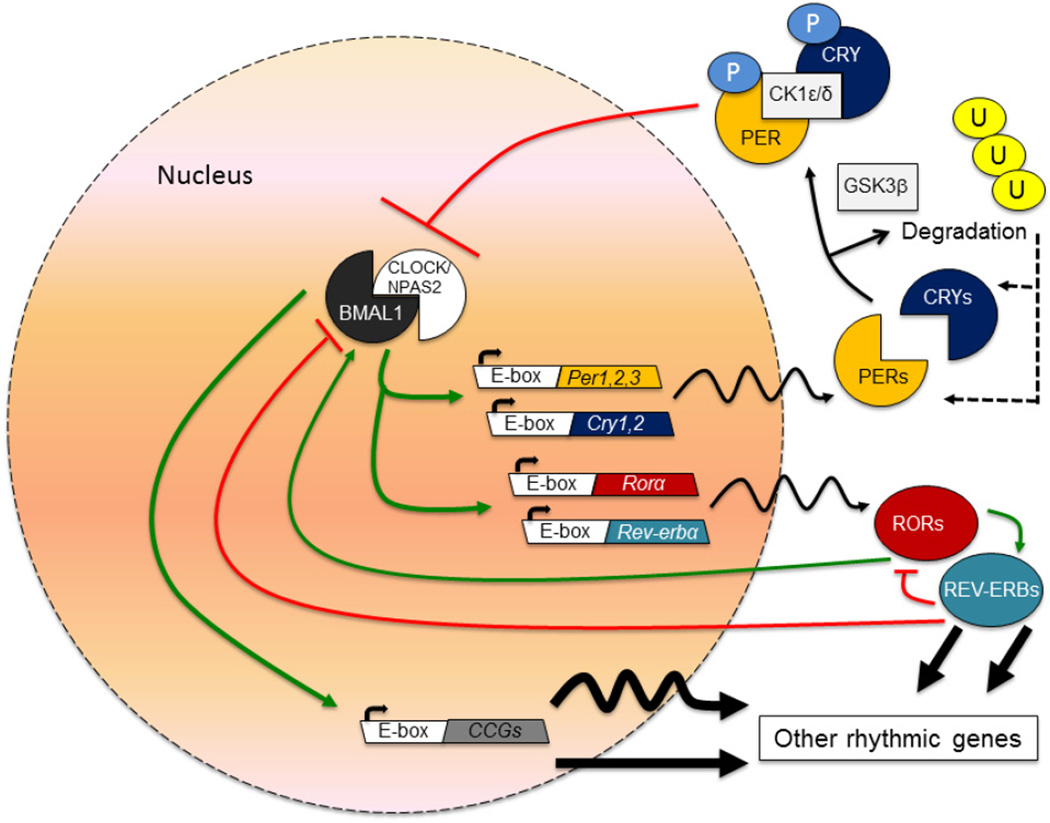Figure 1.
This core molecular clock is composed of a series of transcriptional and translational feedback loops. The basic helix-loop-helix-PAS (Period-Arnt-Single-minded)-containing transcription factors, Circadian Locomotor Output Cycles Kaput (CLOCK) and Brain and Muscle Arnt-Like protein 1 (BMAL1; also called MOP3 and ARNTL) heterodimerize and bind to E-box containing sequences in a number of genes including the three Period (Per) genes (Per1, Per2 and Per3) and the two Cryptochrome (Cry) genes (Cry1 and Cry2). Over time, the PER and CRY proteins dimerize and are shuttled back into the nucleus where CRY proteins can directly inhibit the activity of CLOCK and BMAL1 forming a negative feedback loop which cycles every twenty-four hours. In addition to this feedback loop, the CLOCK and BMAL1 proteins regulate the expression of the nuclear hormone receptors, Rev-erbα and Rora which in turn can repress or activate Bmal1 transcription, respectively, through actions at the Rev-Erb/ROR response element in the promoter. Outside of the SCN, Neuronal PAS-Domain Protein 2 (NPAS2; also known as MOP4) can heterodimerize with BMAL1 and control Per and Cry gene expression. There are several key proteins which regulate the timing of the molecular clock through phosphorylation, sumoylation, and other mechanisms. Casein kinase 1 delta and epsilon proteins (CK1δ and CK1ε) phosphorylate the PER, CRY and BMAL1 proteins altering their stability and nuclear entry. Glycogen synthase kinase 3 beta (GSK3β) also phosphorylates the PER2 protein facilitating nuclear entry, the Rev-erbα protein increasing protein stability, and the CRY2 and CLOCK proteins leading to proteasomal degradation.

